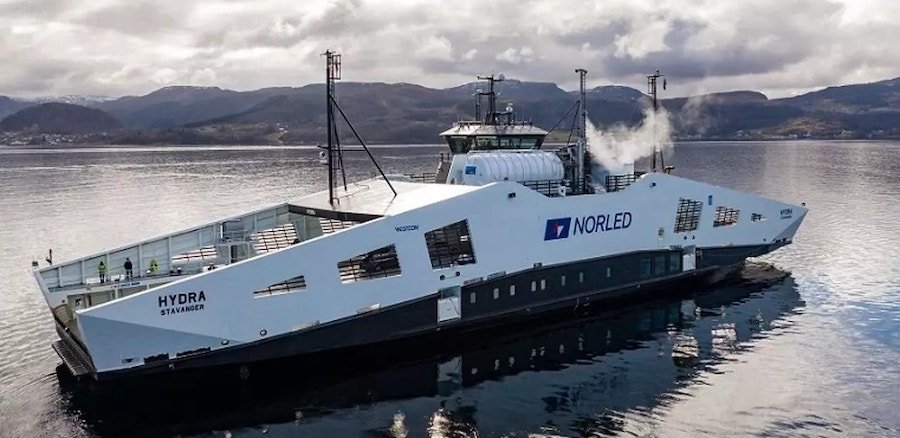SWITCH Maritime to Build a Pioneering Liquid Hydrogen Ferry for Cars and Passengers

SWITCH Maritime is serious about turning hydrogen propulsion into an everyday reality when it comes to US shipping. Its flagship vessel, the Sea Change, is already fully operational and showing what it can do as a San Francisco Bay passenger ferry. The shipowner has two other passenger ferry versions planned, along with a trailblazing RoPax (car-and-passenger) ship.
The Sea Change boasts a 75-passenger capacity running on compressed, gaseous hydrogen. The next-in-line catamaran will use the same hydrogen storage and fuel cell equipment as the Sea Change even though its capacity will increase to 150 passengers.
The other future projects imply a significant jump in terms of technology and engineering. While gaseous hydrogen is fine for small-to-medium vessels, the bigger passenger vessels, vehicle ferries, and harbor tugs require liquid hydrogen, stored in a cryogenic form. Unlike aluminum medium-sized catamarans, these larger ferries with steel hulls provide the space and weight needed for liquid hydrogen storage.
The shipowner's most ambitious plans include a 300-passenger ferry and a RoPax ferry designed for 80 cars and 300 passengers. SWITCH Maritime announced that it's already planning to start building the RoPax vessel together with LH2 Shipping and LMG Marin in Norway. The ferry will be built in the US, and it's based on a Norwegian design. In fact, it will be a sister ship to MF Hydra, which is based on the same design.
MF Hydra is operated by Norled and it entered service in Norway last Spring. Since then, MF Hydra has been operating without interruptions (other than routine maintenance) and has been successfully refueled with liquid hydrogen 50 times so far (once every two weeks, for a six-nautical mile/11 km round-trip).
The future car and passenger ferry will help advance liquid hydrogen fueling in the US shipping industry. According to SWITCH Maritime, it will be fueled once per week by a single liquid hydrogen truck, with no need for an electric charging infrastructure on the shore. This is one of the advantages of hydrogen compared to battery-electric propulsion systems.
While MF Hydra was touted as the world's first hydrogen-powered ferry, its sister ship that's about to be built in the US is expected to be the first of its kind in America, confirming the benefits of liquid hydrogen for zero-emission shipping. In the meantime, the Sea Change is gradually ramping up its activity, preparing for a seven-day-per-week schedule, when it will switch to being fueled twice per week.
Related News
